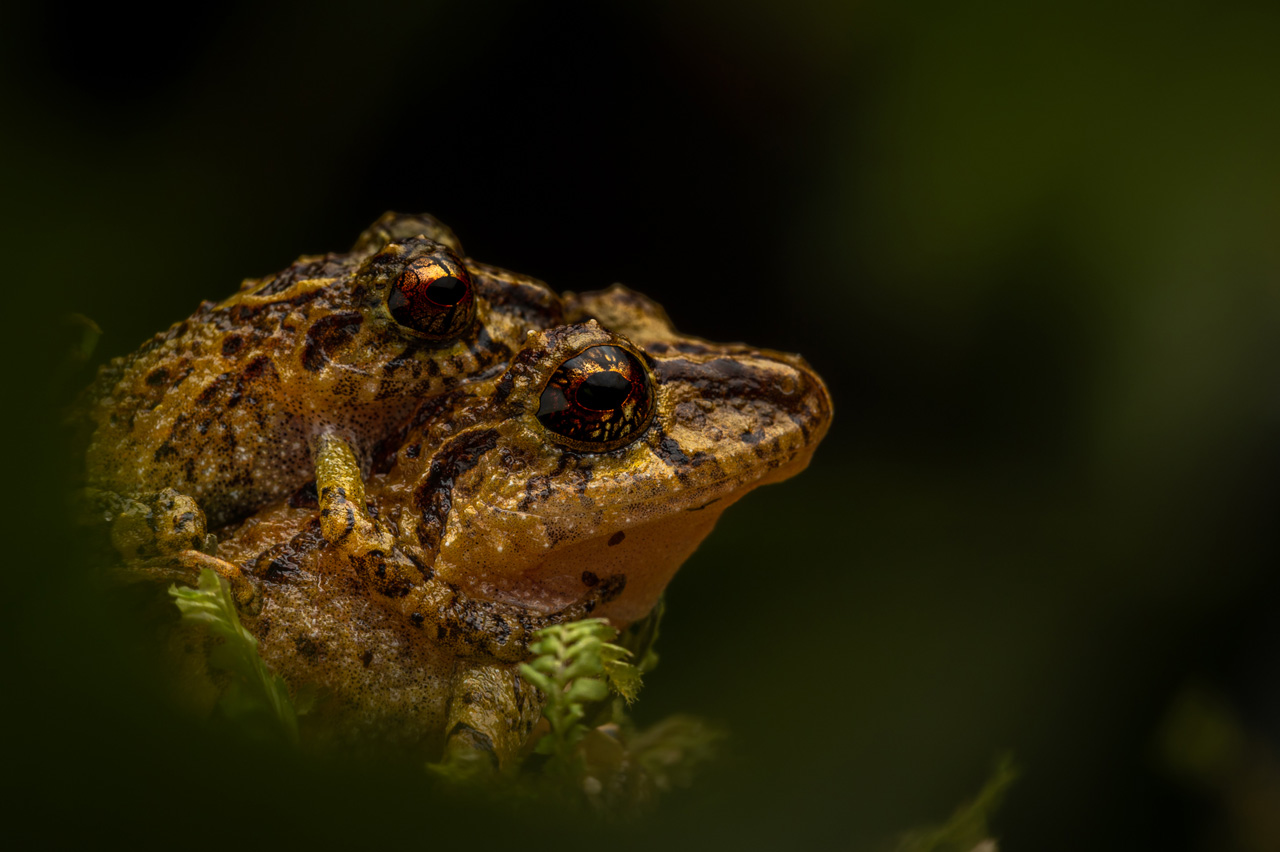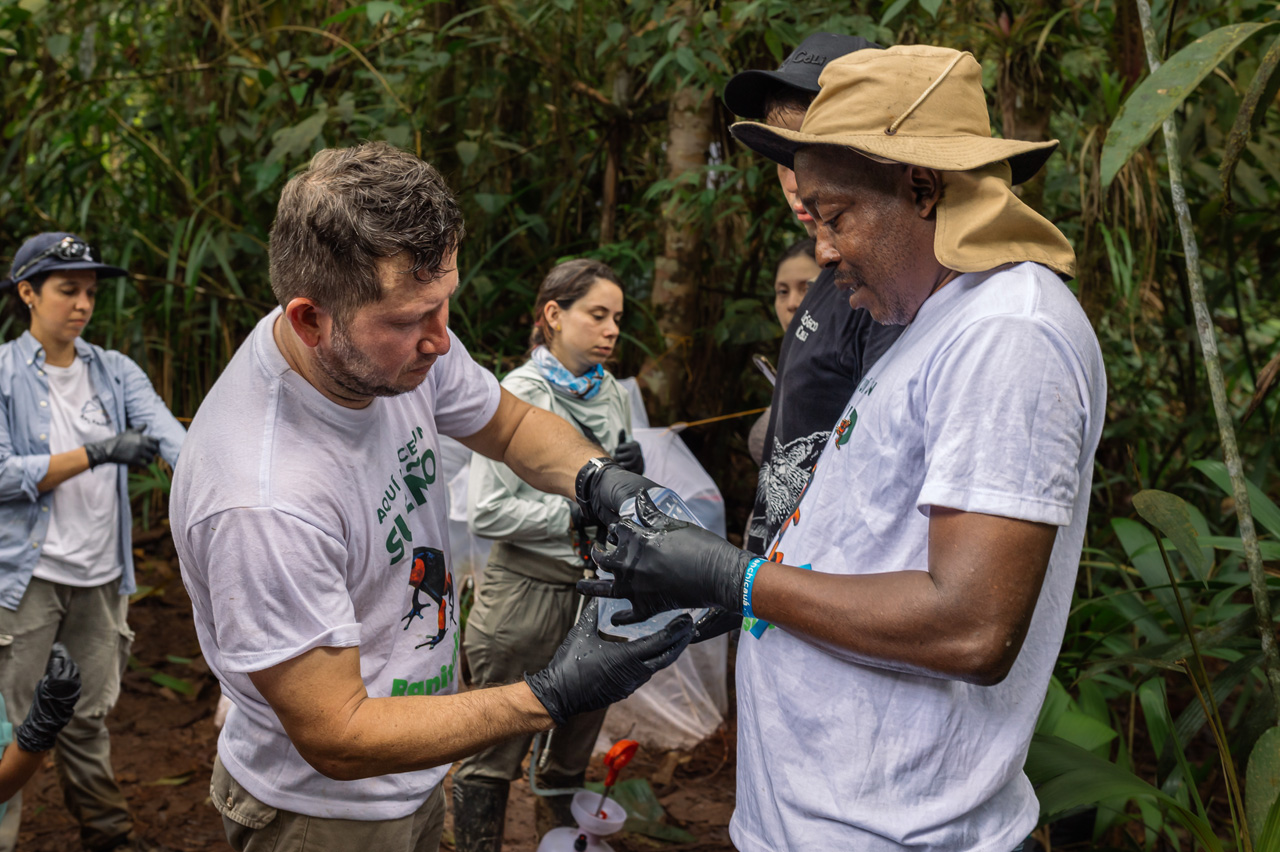AN EFFORT TO PREVENT THEIR EXTINCTION
Frogs, toads, salamanders, and caecilians can be found in almost every part of the planet.
However, a recent study published in the journal Nature indicates that their populations are in decline. Of the 8,000 species that exist worldwide, 40.7% are under threat.
In Colombia, out of the nearly 800 species that inhabit the territory, 301 are at risk — a number higher than in other megadiverse nations like Ecuador, Brazil, Madagascar, India, Peru, or Mexico.
In 2004, when the first study of this kind was published, it was reported that diseases were the main reason why amphibian species were categorized under the IUCN Red List.
 Foto: Jhonattan Vanegas
Foto: Jhonattan Vanegas
It referred to the effects of chytridiomycosis, caused by two fungi (Batrachochytrium dendrobatidis and Batrachochytrium salamandrivorans) that thicken the skin of frogs, hindering their normal breathing and producing toxins that alter the immune response of infected individuals.
However, this new global assessment explained that now, nearly 20 years after that initial diagnosis, these diseases have given way to habitat loss (accounting for 37% of the impacts) and climate change (responsible for 39% of the damage), which have become the two most significant causes of the reported decline.
The first issue, primarily driven by increased consumption of goods and services leading to deforestation, agricultural expansion, infrastructure development, and pollution, leaves amphibians with fewer places to live, reproduce, and feed. In Colombia, this is most evident in the Andean region, where, due to being the most populated and developed area, the most intense deterioration for our species has been concentrated.
Today, WCS Colombia, through the Amphibian Conservation Strategy in Colombia project, works to protect this group of vertebrates. It operates in the Selva de Florencia, Farallones de Cali, Tatamá, Munchique, and Guanentá Alto Río Fonce National Natural Parks. These protected areas host around 33% (71) of the threatened species found in the country.
THE CONSERVATION STRATEGY
The Amphibian Conservation Strategy project has been developed by WCS (Wildlife Conservation Society), together with the Cali Zoo and with the support of Zoo Zürich AG. We have been working tirelessly since 2016.
The main goal has been the protection of threatened species of this group of vertebrates that live in national protected areas.
Over all these years, our efforts have focused on seven national parks, implementing various conservation actions through conservation agreements, assessment of chytrid fungi and ranaviruses, and environmental studies funded by the Mono Hernández Scholarship Fund.
 Photo: Jhonattan Vanegas
Photo: Jhonattan Vanegas
We also conduct monitoring and comprehensive inventories to understand the status of species populations and the threats they face.
Additionally, we organize workshops to improve species identification skills and the use of the Spatial Monitoring and Reporting Tool (SMART), which allows protected area managers to optimize monitoring, assessment, and adaptive management of their patrolling activities.
In Chingaza National Natural Park, we achieved a conservation agreement that included trout control, habitat protection, and the promotion of sustainable tourism.
In Farallones de Cali National Natural Park, we work on conservation agreements with landowners to protect the species Oophaga lehmanni and Oophaga anchicayensis, implementing environmental education activities and promoting responsible tourism. A similar effort focuses on the Atelopus lozanoi frog in Chingaza National Natural Park (Cundinamarca).
Translated with AI support